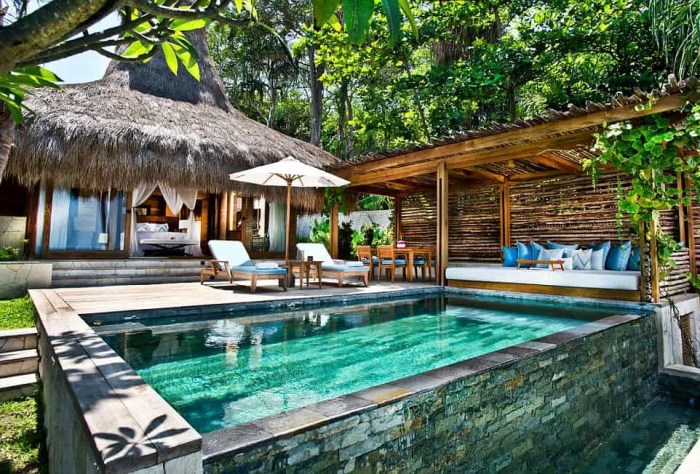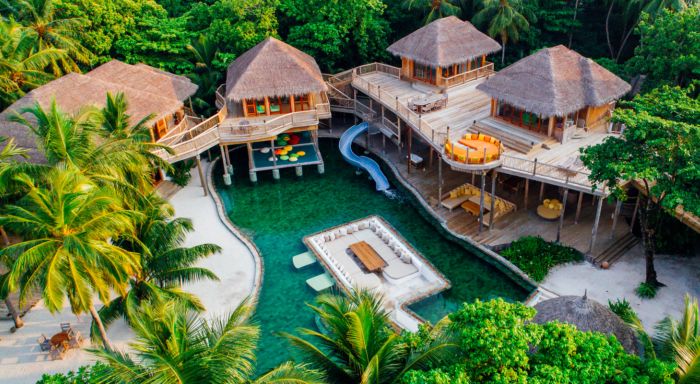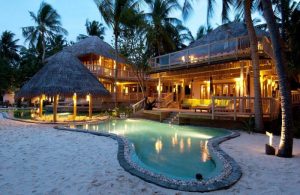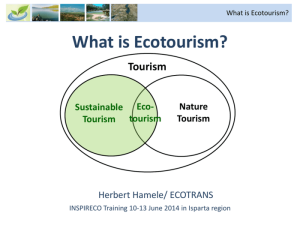
Envision a world where luxury seamlessly intertwines with nature’s bounty, creating ethereal escapes that redefine opulence. Luxury Ecotourism Resorts beckon travelers to indulge in sustainable extravagance, promising a harmonious blend of eco-conscious practices and unparalleled comfort. Dive into a realm where exclusivity meets environmental stewardship, ensuring an unforgettable experience that nourishes both the soul and the planet.
Luxury Ecotourism Resorts stand as bastions of responsible tourism, offering a sanctuary for discerning travelers seeking opulent refuge within the embrace of nature. As we delve into the facets of these exquisite retreats, a tapestry of sustainability, biodiversity conservation, eco-friendly practices, and community engagement unfolds, painting a vivid picture of luxury redefined.
Luxury Ecotourism Resorts

Luxury ecotourism resorts combine the opulence and comfort of traditional luxury resorts with a strong focus on sustainability and eco-friendly practices. These resorts aim to provide guests with a luxurious experience while minimizing their environmental impact and supporting local communities.
Importance of Sustainability
Sustainability is a core principle of luxury ecotourism resorts. These resorts prioritize the conservation of natural resources, protection of wildlife, and reduction of carbon footprint. By implementing sustainable practices, such as using renewable energy sources, minimizing waste, and supporting local conservation efforts, luxury ecotourism resorts help preserve the environment for future generations.
Differences from Traditional Luxury Resorts
Unlike traditional luxury resorts, luxury ecotourism resorts place a greater emphasis on environmental and social responsibility. While both offer high-end amenities and exceptional service, luxury ecotourism resorts go a step further by integrating eco-friendly initiatives into every aspect of the guest experience. From sustainable architecture and locally sourced organic cuisine to nature-focused activities and community engagement, these resorts offer a unique blend of luxury and sustainability.
Eco-friendly Practices
When it comes to luxury ecotourism resorts, implementing eco-friendly practices is crucial to minimize their impact on the environment and promote sustainability. These practices often involve the use of renewable energy sources and efficient waste management and recycling programs.
Use of Renewable Energy Sources
Luxury ecotourism resorts commonly harness renewable energy sources such as solar power, wind power, and geothermal energy to reduce their reliance on non-renewable resources. By utilizing these clean energy sources, these resorts can lower their carbon footprint and contribute to a more sustainable future.
Significance of Waste Management and Recycling Programs
Waste management and recycling programs play a vital role in maintaining eco-friendly operations at luxury ecotourism resorts. These programs help minimize waste generation, promote recycling of materials, and ensure proper disposal of waste to prevent environmental pollution. By implementing effective waste management strategies, these resorts can uphold their commitment to sustainability and conservation.
Biodiversity Conservation
Luxury ecotourism resorts play a crucial role in biodiversity conservation by implementing sustainable practices that help protect and preserve local flora and fauna. These resorts have the opportunity to raise awareness among guests about the importance of biodiversity and the need for conservation efforts.
Initiatives for Biodiversity Conservation
- Creating protected areas within resort grounds to safeguard habitats of endangered species.
- Implementing waste management programs to reduce pollution and its impact on local ecosystems.
- Supporting local conservation projects and collaborating with environmental organizations.
- Offering educational programs for guests to learn about the significance of biodiversity conservation.
Importance of Biodiversity Conservation in Luxury Ecotourism
-
Biodiversity is essential for the health of ecosystems, providing services like pollination, water purification, and soil fertility.
-
Conserving biodiversity ensures the long-term sustainability of luxury ecotourism resorts by preserving natural resources and maintaining a unique environment for visitors to enjoy.
-
By protecting biodiversity, luxury ecotourism resorts contribute to the overall well-being of local communities and support the livelihoods of those dependent on natural resources.
Sustainable Architecture and Design

In luxury ecotourism resorts, sustainable architecture plays a vital role in minimizing the environmental impact of the property while providing a unique and immersive experience for guests.
Use of Natural Materials and Low-Impact Construction Techniques
Luxury ecotourism resorts often incorporate natural materials such as locally sourced wood, stone, and bamboo in their construction. These materials not only blend seamlessly with the surrounding environment but also have a lower carbon footprint compared to traditional building materials. Additionally, resorts prioritize low-impact construction techniques such as passive solar design, rainwater harvesting, and green roofs to reduce energy consumption and minimize waste.
Enhanced Guest Experience
Sustainable architecture enhances the overall guest experience in luxury ecotourism resorts by immersing visitors in the natural surroundings and fostering a sense of connection to the environment. The use of natural materials creates a warm and inviting atmosphere, while the incorporation of eco-friendly design elements such as large windows for natural light and ventilation, outdoor living spaces, and green walls enhances the guests’ comfort and well-being.
Guests can enjoy a luxurious stay while knowing that their experience is contributing to the conservation and preservation of the surrounding biodiversity.
Community Engagement
Luxury ecotourism resorts play a crucial role in engaging with local communities to ensure sustainable development and positive impacts on the surrounding areas. By actively involving community members in various initiatives, these resorts aim to foster mutual respect, understanding, and cooperation.
Local Employment Opportunities
One way luxury ecotourism resorts engage with local communities is by providing employment opportunities to residents. From housekeeping and culinary services to tour guiding and cultural performances, these resorts often prioritize hiring local individuals, thereby contributing to the economic well-being of the community.
Support for Local Businesses
In addition to creating job opportunities, luxury ecotourism resorts also support local businesses by sourcing products and services locally. This can include purchasing fresh produce from nearby farmers, showcasing local artisans’ crafts in gift shops, or partnering with community-led enterprises for excursions and activities. By investing in local businesses, these resorts help stimulate the local economy and promote entrepreneurship.
Community Development Projects
Many luxury ecotourism resorts actively participate in community development projects to address social and environmental challenges in the area. This can involve initiatives such as building schools, healthcare facilities, or infrastructure improvements in collaboration with local authorities and community leaders. By investing in such projects, these resorts contribute to the overall well-being and development of the community.
Wellness and Nature-Based Activities
Wellness and nature-based activities play a crucial role in luxury ecotourism resorts, offering guests a unique opportunity to reconnect with nature while promoting health and relaxation.
Benefits of Connecting Guests with Nature
- Improve mental well-being: Spending time in nature has been linked to reduced stress levels and improved mood.
- Physical health benefits: Activities like hiking, yoga, and meditation help guests stay active and improve their overall well-being.
- Enhanced relaxation: The serene natural surroundings of ecotourism resorts provide a peaceful escape from the hustle and bustle of daily life.
- Increased mindfulness: Nature-based activities encourage guests to be present in the moment and appreciate the beauty of their surroundings.
Unique Wellness Programs
Luxury ecotourism resorts offer a variety of unique wellness programs to cater to the needs of their guests:
- Forest bathing: Guided walks through the forest, focusing on mindfulness and connecting with nature.
- Spa treatments using natural ingredients: Guests can indulge in massages and treatments using locally sourced, eco-friendly products.
- Yoga and meditation classes: Daily sessions to help guests relax, unwind, and improve their mental and physical well-being.
- Healthy dining options: Farm-to-table meals that emphasize fresh, organic ingredients to nourish the body.
In a world where luxury and sustainability converge, Luxury Ecotourism Resorts emerge as beacons of hope, showcasing a harmonious coexistence between lavish living and environmental preservation. As we bid adieu to this exploration of opulent eco-retreats, let us carry forward the ethos of responsible travel, cherishing the beauty of our planet while indulging in the lap of luxury.
FAQ Overview
How do luxury ecotourism resorts contribute to biodiversity conservation?
Luxury ecotourism resorts play a crucial role in biodiversity conservation by implementing sustainable practices, supporting local flora and fauna, and engaging in conservation initiatives.
What sets luxury ecotourism resorts apart from traditional luxury resorts?
Luxury ecotourism resorts differentiate themselves by prioritizing sustainability, incorporating eco-friendly practices, and actively engaging with local communities to ensure responsible tourism.
What types of wellness programs are offered at luxury ecotourism resorts?
Wellness programs at luxury ecotourism resorts often include nature-based activities, spa treatments using natural ingredients, yoga and meditation sessions, and outdoor adventures designed to promote health and relaxation.





